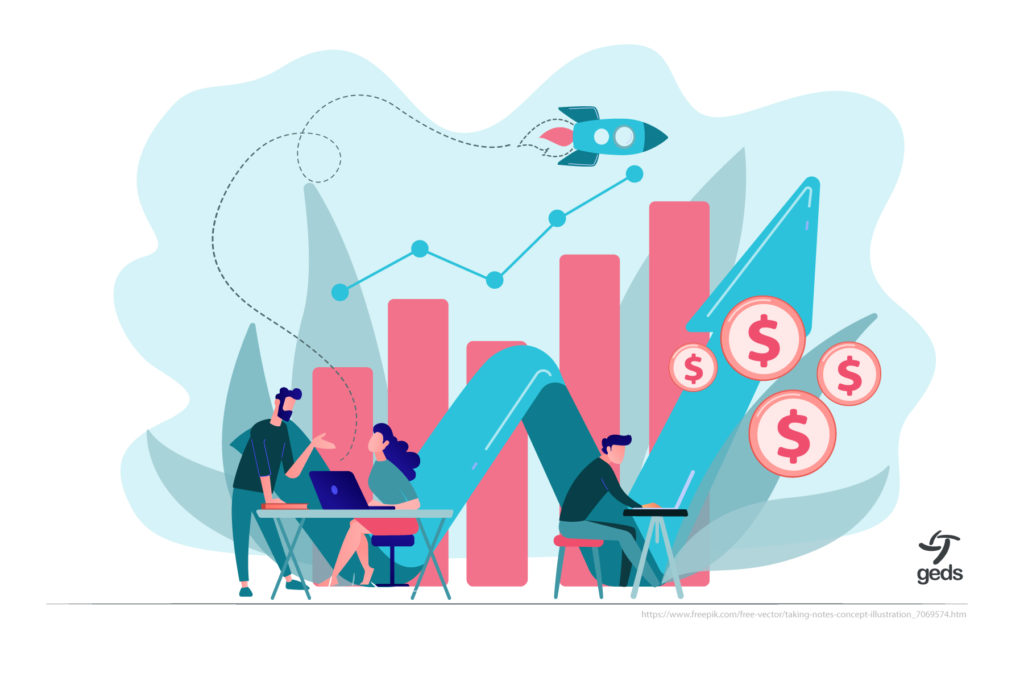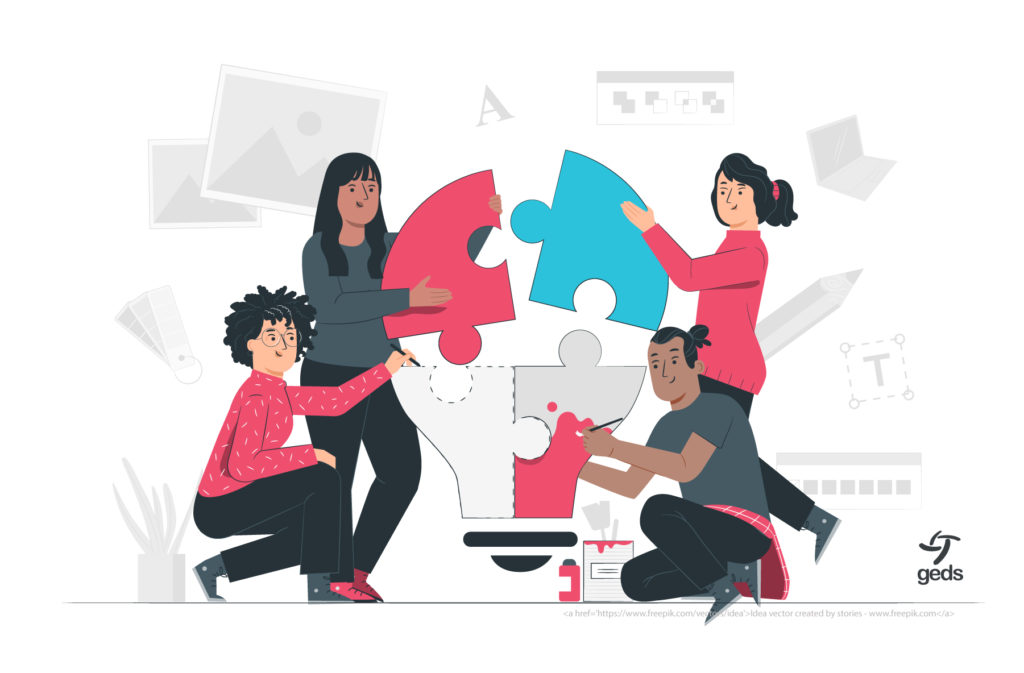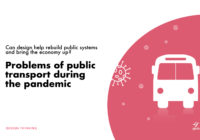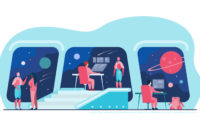The pandemic has changed the way companies and people work nowadays. GEDS is no exception. Workshops at GEDS are a crucial component of its working infrastructure. After the pandemic took place, the company had to revise the way people communicate during workshops as working in-person was no longer available. However, the company has been working remotely for a few years before the pandemic started and the shift to a digital version of workshops was not an issue for them. GEDS’s solid experience has helped them to embrace a new reality and help others to follow their lead. One of such remote workshops will be discussed in this article as a road-mapping event for MATUROLIFE.
MATUROLIFE is a nanotechnology textile project funded by the European Commission H2020 program. The project aims to create prototypes for assistive technology products enhanced with smart textiles. The purpose of the project is to make the elderly live more independent, comfortable, and enjoyable by implementing design as a strategic tool to find a solution. This event was planned to be held in-person at a conference in Berlin in May 2020. However, due to the pandemic, it was impossible to run an event in-person. Therefore, GEDS as the lead design partner of MATUROLIFE has designed the road-mapping experience for the digital environment by implementing strategic design methods and tools upon request of Narinder Bains, MATUROLIFE project manager.
We are sharing an interview by our designer Albina Omarova, investigating the details of the shift from an in-person workshop to a digital one.
- Did you have prior experience holding a digital workshop?
GEDS Team: Yes, the company had a lot of experience in holding virtual workshops. We just hosted a remote design thinking course for ESSEC eMBA 2021 class. It was also planned in person at the campus in Paris before the pandemic. We turned it into fully digital a 2-and-a-half-day workshop. It was a huge success. In fact, the evaluation of this year’s digital workshop class rated higher than of the previous year. The success of our digital workshops lies in an individual approach for each workshop.
We plan and rehearse in advance to identify any problems that might appear during the online workshop. For the MATUROLIFE workshop, we asked ourselves, in the beginning, why are we organizing this event and how can we make people work collectively. Therefore, we decided to design an interactive experience where we could collaborate with the participants in real-time. To help with that we created a visual tool a road-mapping canvas for the participants to interact collectively at the digital workshop.
- What was the aim of the workshop?
GEDS Team: The workshop aimed to build a commercial roadmap for MATUROLIFE’s smart products: smart footwear and clothes for older people by inviting external stakeholders to participate in the event. It was an important event as we had to coordinate activity across teams and companies, set tasks and goals for the next phase, and build consensus and understanding within teams for this project. It was a great opportunity for us to apply our strategic design methods to a new domain. We would like to thank MATUROLIFE project manager Narinder Bains for this opportunity.
- How long did it take you to turn in-person workshop into digital?
GEDS Team: When we realized that the pandemic won’t go away, we started preparing for the digital workshop. We had three months to turn the in-person workshop into a digital one. This time was more than we needed as we are very acquainted with digital space and organizing a digital event required less maintenance. However, the main challenge was understanding the other partners’ insights and explain to them how a digital experience would work. This preparation took more time than designing the tools. In general, we believe one month is more than enough to get people to attend and design needed tools for a workshop of such size.
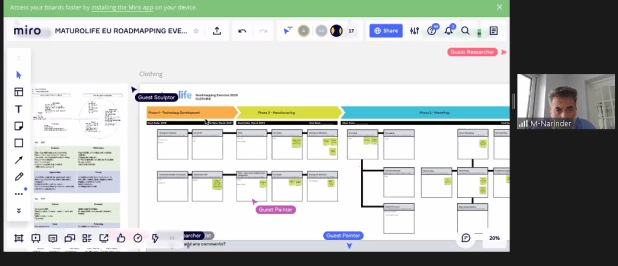
Image: Screenshot from the Roadmapping Event
- How big was the workshop?
GEDS Team: Fifteen participants were invited for the digital workshop that included stakeholders, designers, and manufactures of different companies plus the organizing team from 9 countries in Europe.
- Why did you want to bring all these people together?
GEDS Team: Ideating together in a digital space helped to build on each other responses, and provided social and playful aspects of the event. Besides, the digital workshop was very convenient as we were able to capture data at once. It saved a lot of time and required less maintenance work from emailing everyone to complete a form, to ensure tasks were complete correctly. The workshop provided better transparency and a clear understanding. The main reason why we did this workshop in-real-time was that the online event was very efficient and fun.
- Did you find it easier to gather people online or in-person? If yes, why?
GEDS Team: These are different experiences that are not comparable. Both of them have their advantages and disadvantages. Now, of course, we can understand the convenience of holding online events for the participants as people work from home. Digital space provided convenient and better time management, as we were able to see what everyone is doing from one screen. But we still would prefer digital over the in-person event if there were no COVID pandemic as the digital space gives us more possibilities to be creative than physical space. However, as mentioned before digital workshops are more convenient, less time-consuming to organize, and are very efficient.
- What difficulties did you face while organizing an online workshop for the digital space?
GEDS Team: One of the problems was, people are not familiar with digital workshops and tools. It will take time for people to accept it as the new normal. Other concerns we faced were similar to the in-person workshop. We had to invite participants to the workshop and find a suitable time for the participants and the organizing team etc.
- Can you tell me how you structured this particular workshop?
GEDS Team: Some people were very new to this style of working and needed some preparation time beforehand. So, we provided a clear introduction and instructions on how to use digital tools and space to participants beforehand. Afterward, we gave an overview of the workshop process and completed the tasks set for the workshop.
- What tools and methods did you use to re-design the road mapping experience for the virtual environment?
GEDS Team: Overall, we used strategic design, service design, and interaction design tools. We used all these different design methods to create the whole experience from start to finish. Also, we realized document files are a bit restrictive, so for this interactive workshop, we visualized the road mapping tool as a timeline and uploaded it online using Miro for participants to interact within real-time. By visualizing the roadmap as timeline participants were able to understand the phases of the roadmap and the completion dates better. Also, a visualized online roadmap allowed participants to add notes without any limitations. The roadmap as a visual tool was a leap in communication, even partners who were supplying the information for the workshop had a better understanding of the process afterward.
- Do you have some personal tips on how to engage with people online and facilitate conversations?
GEDS Team: Digital space should not mimic in-person environment, they are completely different. For the digital workshops, we would suggest having clear communication and instructions to be able to come up with quick solutions on the go. Also, don’t try to fit everything in one workshop. It is better to separate tasks into interactive sessions like Q&A and other different activities, which will help to make online events more engaging and constructive.
11 . How was the feedback from the attendees?
GEDS Team: We had great feedback, here is a quote from one of the attendees “ Both of the events were very well-organized and informative. So, it was a great experience for me to attend such a road-mapping workshop for the first time, and what was more, attending an online road-mapping workshop was more interesting! “. We had a similar response from ESSEC 2021 class as well. People find our digital workshops more enjoyable than in-person.
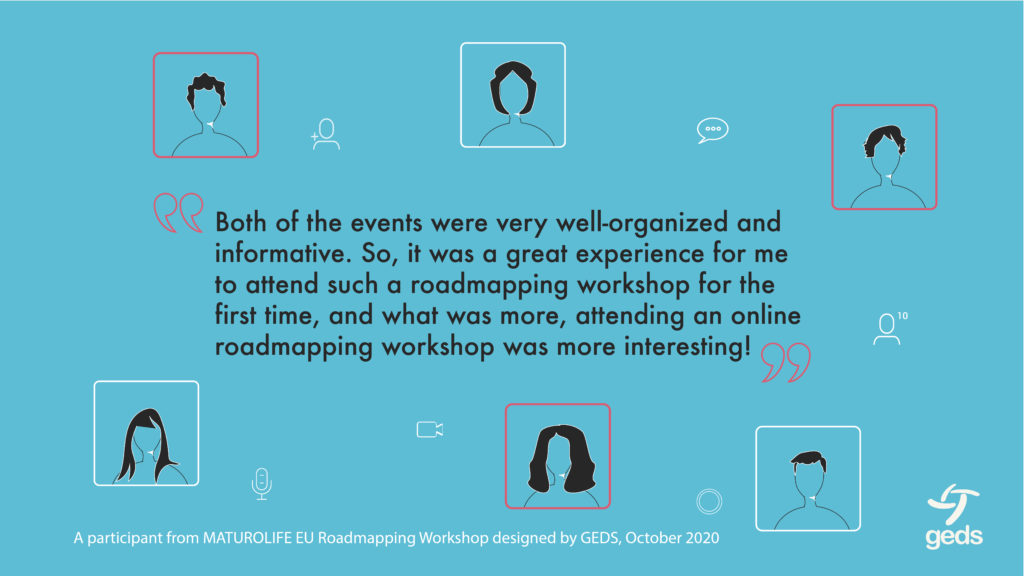
All in all, we all have to get used to the new reality of working digitally, and design consultancy companies like GEDS can help us navigate these unfamiliar waters. As we now know, digital workshops can be very successful in data collection and time management with the support of knowledgeable design companies. So let’s embrace this new reality and make it work for us!
If you have questions or comments you can contact with us.

